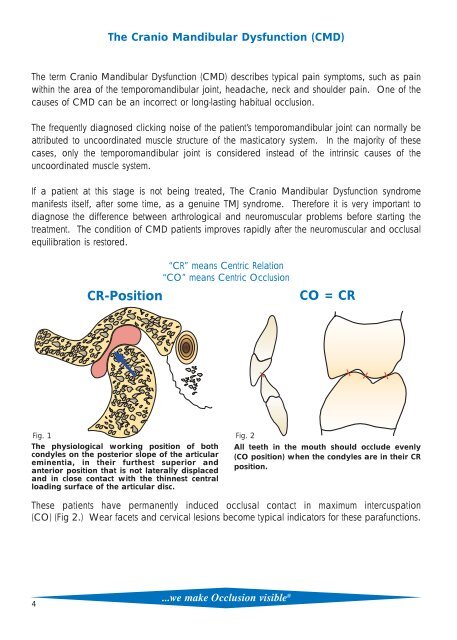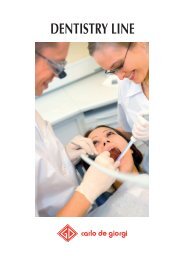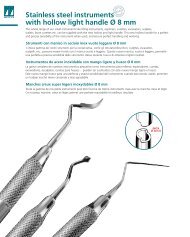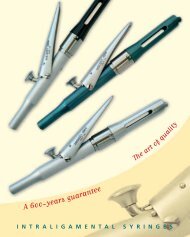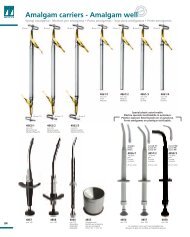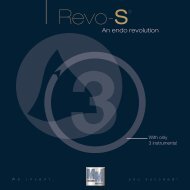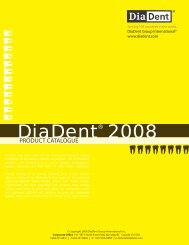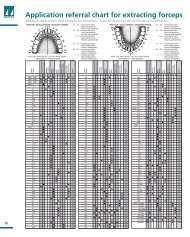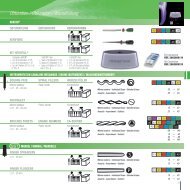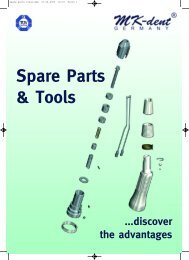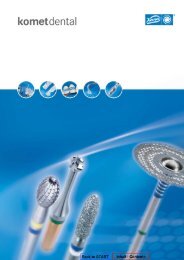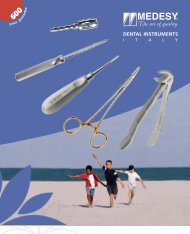Bausch Articulating Papers - Janouch Dental
Bausch Articulating Papers - Janouch Dental
Bausch Articulating Papers - Janouch Dental
You also want an ePaper? Increase the reach of your titles
YUMPU automatically turns print PDFs into web optimized ePapers that Google loves.
The Cranio Mandibular Dysfunction (CMD)<br />
The term Cranio Mandibular Dysfunction (CMD) describes typical pain symptoms, such as pain<br />
within the area of the temporomandibular joint, headache, neck and shoulder pain. One of the<br />
causes of CMD can be an incorrect or long-lasting habitual occlusion.<br />
The frequently diagnosed clicking noise of the patient’s temporomandibular joint can normally be<br />
attributed to uncoordinated muscle structure of the masticatory system. In the majority of these<br />
cases, only the temporomandibular joint is considered instead of the intrinsic causes of the<br />
uncoordinated muscle system.<br />
If a patient at this stage is not being treated, The Cranio Mandibular Dysfunction syndrome<br />
manifests itself, after some time, as a genuine TMJ syndrome. Therefore it is very important to<br />
diagnose the difference between arthrological and neuromuscular problems before starting the<br />
treatment. The condition of CMD patients improves rapidly after the neuromuscular and occlusal<br />
equilibration is restored.<br />
“CR” means Centric Relation<br />
“CO” means Centric Occlusion<br />
CR-Position<br />
CO = CR<br />
Fig. 1 Fig. 2<br />
The physiological working position of both<br />
condyles on the posterior slope of the articular<br />
eminentia, in their furthest superior and<br />
anterior position that is not laterally displaced<br />
and in close contact with the thinnest central<br />
loading surface of the articular disc.<br />
All teeth in the mouth should occlude evenly<br />
(CO position) when the condyles are in their CR<br />
position.<br />
These patients have permanently induced occlusal contact in maximum intercuspation<br />
(CO) (Fig 2.) Wear facets and cervical lesions become typical indicators for these parafunctions.<br />
4<br />
...we make Occlusion visible ®


